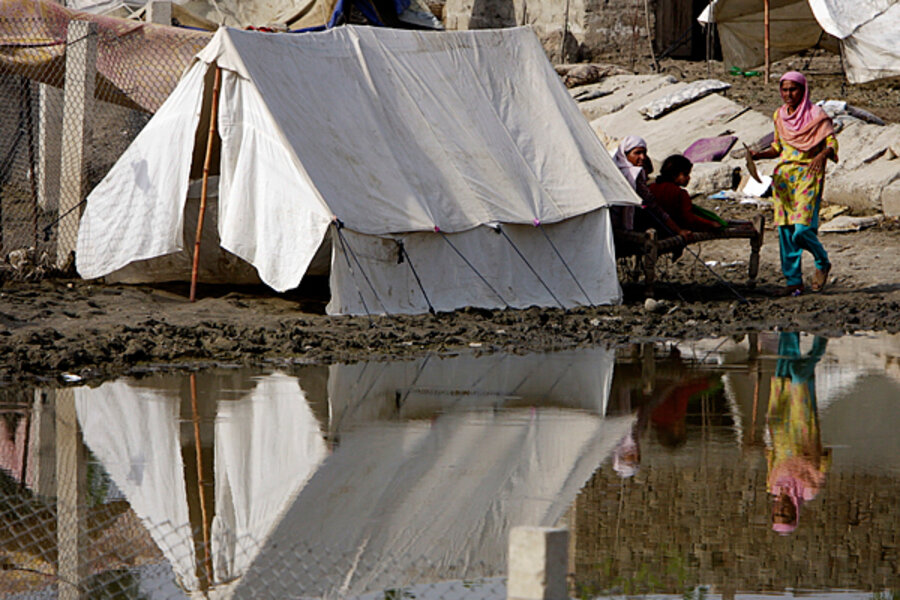Pakistan flood waters recede but country's debt rises
Loading...
| Lahore, Pakistan
The end of what may be the worst flooding in Pakistan’s history could soon be in sight, according to government officials. Now officials will be preoccupied with providing relief to some 17 million people – and reviving the country’s devastated economy.
As part of that effort, In Pakistan’s major cities, a movement to cancel Pakistan’s external debt, which is set to reach some $74 billion by 2014, is now under way.
“Our annual debt servicing is on average $3 billion. That is almost three times the amount the government of Pakistan pays on health care,” says Abdul Khaliq Shah, the country’s spokesman for Committee for Abolition of Third World Debt. Mr. Shah organized a gathering of leading Pakistani intellectuals and rights activists in the eastern city of Lahore on Sunday to discuss the protesting of foreign debt. They are hoping to persuade international officials to cancel Pakistan's debt to help flood affectees. A protest is planned to take place in front of Pakistan’s parliament house on Sept. 2.
Shah says the prevailing conditions in Pakistan after the flooding justifies the repudiation of debt under a UN Human Rights Commission resolution titled "State of Necessity," adding that up to 70 percent of Pakistan’s external debt was accrued under the rule of dictators and should therefore be waived, just as the US refused to pay most of the external debt accrued by Saddam Hussein’s government.
The other argument for debt cancellation among participants was the precedent that countries facing similar tragedies to Pakistan’s catastrophic flooding set. As they recover, countries are often forced by international financial institutions and donor countries to mortgage their future as they borrow for relief and recovery efforts, magnifying problems for years.
Though Pakistan’s Geo News on Tuesday reported that eight more villages in the province of Sindh were inundated by the raging waters, residents were evacuated beforehand, according to Pakistan disaster management official Hadi Baksh. The worst of the flooding that originated in the country’s northwest and swept southward is over Bakhsh, according to the Associated Press. “The floodwaters are now heading to the Arabian Sea,” he said.
The flooding began some four weeks ago and has so far claimed about 1,600 lives, left more than 4 million homeless, and damaged more than 7.9 million acres of farmland, according to the UN’s food agency. Recovery is slated to take months, if not years. Agriculture accounts for almost one-quarter of Pakistan’s economy.
International aid was slow to trickle in, though as of last week, it stood at more than $800 million.
Pakistan’s talks with the International Monetary Fund in Washington continued on Monday, as IMF officials insisting Pakistan will need to continue to implement tax and energy sector reforms for an $11.3 billion loan negotiated in 2008, according to Dawn, a leading Pakistani daily.





